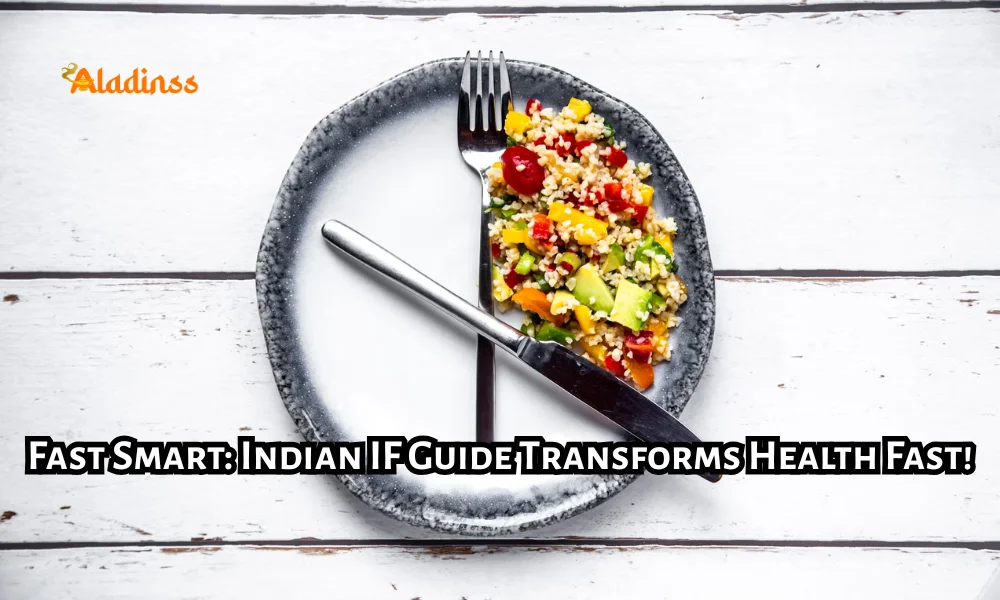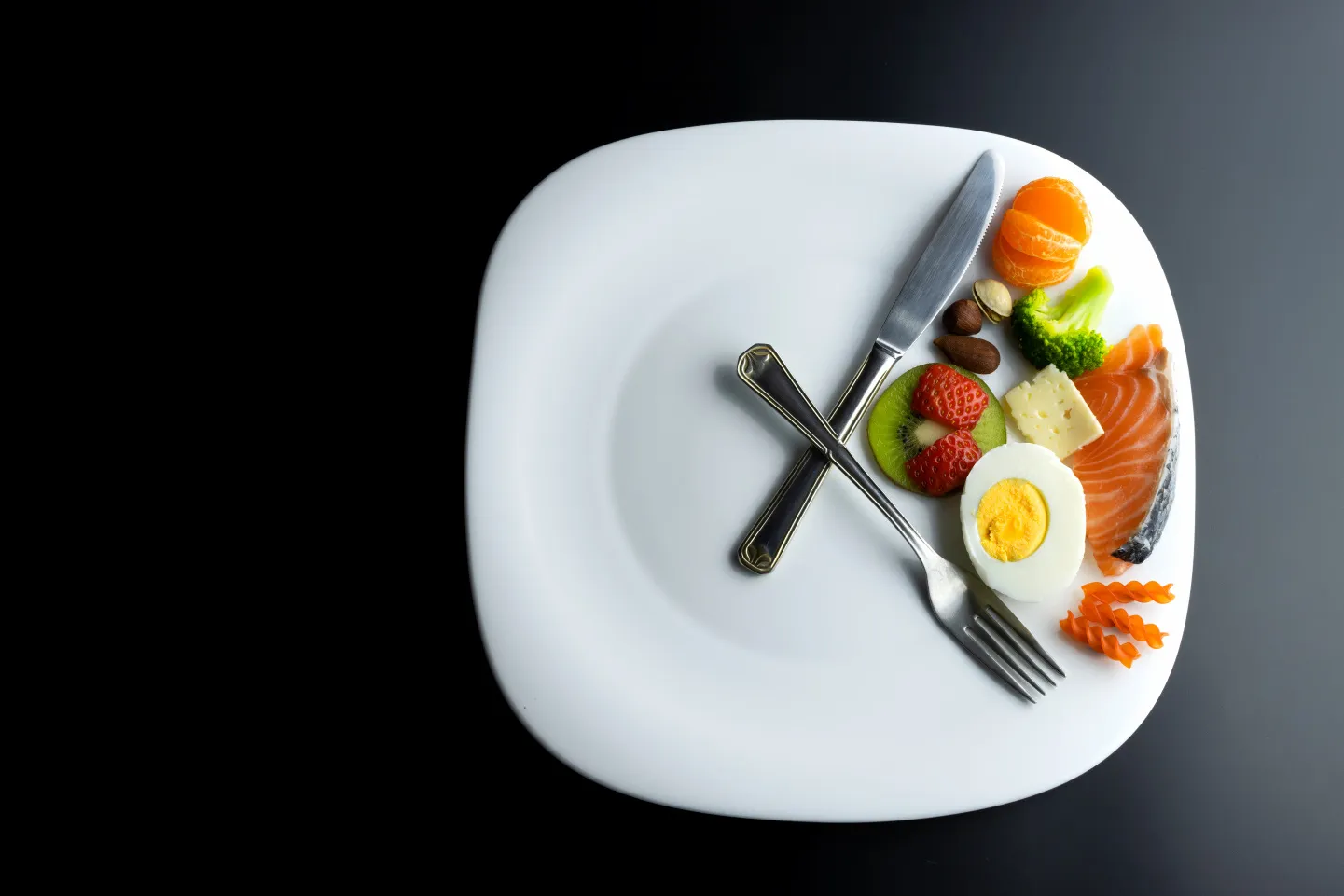Intermittent Fasting for Beginners with Indian Meal Plan Guide

Intermittent Fasting for Beginners – Benefits, Mistakes, and Indian Meal Plan

Intermittent fasting for beginners has emerged as a powerful health strategy that goes beyond weight loss. This eating pattern alternates between periods of eating and fasting, helping your body tap into stored fat for energy. Unlike traditional diets that focus on what you eat, intermittent fasting emphasizes when you eat. For Indian beginners, this approach fits seamlessly into cultural eating habits while delivering remarkable health transformations.
The beauty of intermittent fasting lies in its simplicity and flexibility. You don't need expensive supplements or complicated meal prep. Your body naturally adapts to burning fat during fasting windows, leading to sustainable weight management. Research shows that this eating pattern can improve insulin sensitivity, reduce inflammation, and enhance brain function – all while maintaining your favorite Indian dishes.
Understanding Intermittent Fasting for Beginners
Intermittent fasting for beginners starts with understanding your body's natural rhythms. When you eat, your body processes food for energy. During fasting periods, it switches to burning stored fat. This metabolic switch typically occurs 8-12 hours after your last meal, making intermittent fasting an efficient fat-burning strategy.
The 16/8 method remains the most popular choice among Indian beginners. You fast for 16 hours and eat within an 8-hour window. For example, eating between 10 AM and 6 PM while fasting from 6 PM to 10 AM the next day. This schedule aligns perfectly with Indian work routines and family dinner times.
Your body experiences cellular repair during fasting periods through autophagy – a natural cleanup process that removes damaged cells. This cellular rejuvenation contributes to anti-aging benefits and disease prevention. Indian beginners often notice improved digestion as their gut gets regular rest periods between meals.
Health Benefits That Transform Indian Lifestyles
Weight loss tops the list of intermittent fasting benefits for Indian beginners. Studies show an average loss of 3-8% body weight over 3-24 weeks. The magic happens because fasting naturally reduces calorie intake while preserving muscle mass. Indian women particularly benefit from reduced belly fat accumulation.
Heart health improves significantly with intermittent fasting. Indian populations face high risks of cardiovascular diseases, but fasting lowers LDL cholesterol, blood pressure, and triglycerides. The anti-inflammatory effects protect against heart attacks and strokes that plague modern Indian lifestyles.
Brain function receives a major boost through increased BDNF production – a protein that grows new nerve cells. Indian students and professionals report better focus, memory, and mental clarity. The stable blood sugar levels prevent afternoon energy crashes common with carb-heavy Indian meals.
Diabetes prevention stands out as a crucial benefit for Indians. With over 77 million diabetic cases in India, intermittent fasting improves insulin sensitivity by 20-31%. This natural approach helps regulate blood sugar without medication, especially powerful when combined with traditional Indian spices like turmeric and cinnamon.
Common Mistakes Indian Beginners Must Avoid
Starting too aggressively leads many Indian beginners to failure. Jumping into 20-hour fasts without preparation causes fatigue and cravings. Instead, begin with 12-hour fasting windows and gradually increase by 30 minutes daily. Your body needs time to adapt to this new eating pattern.
Breaking fasts with heavy Indian meals creates digestive distress. Avoid oily parathas or biryani immediately after fasting. Start with light, easily digestible foods like fruits, yogurt, or khichdi. Your stomach shrinks during fasting and needs gentle reintroduction to solid foods.
Dehydration poses a significant risk during Indian summers. Many beginners forget that water, black coffee, and herbal teas are allowed during fasting. Aim for 3-4 liters of water daily, especially crucial in hot Indian climates where dehydration symptoms mimic hunger.
Overeating during eating windows sabotages progress. The "I fasted all day" mentality leads to consuming extra calories. Track your portions mindfully – intermittent fasting works because it naturally reduces overall calorie intake, not because you can eat unlimited amounts later.
7-Day Indian Meal Plan for Intermittent Fasting Success
This Indian meal plan follows the 16/8 method with eating windows from 10 AM to 6 PM. Each day provides balanced nutrition using familiar Indian ingredients while maintaining cultural food preferences. Total calories range between 1500-1800, suitable for most Indian adults.
- Day 1: 10 AM - Masala oats with vegetables; 1 PM - Dal chawal with mixed vegetable curry; 4 PM - Greek yogurt with fruits; 6 PM - Grilled paneer with salad
- Day 2: 10 AM - Poha with peanuts; 1 PM - Rajma with brown rice; 4 PM - Buttermilk with roasted makhana; 6 PM - Chicken tikka salad
- Day 3: 10 AM - Vegetable upma; 1 PM - Fish curry with quinoa; 4 PM - Sprouts chaat; 6 PM - Tofu stir-fry
The remaining days follow similar patterns with variations in proteins and vegetables. Include traditional Indian superfoods like moringa, amla, and different lentils. Spices such as cumin, coriander, and turmeric enhance flavor while providing anti-inflammatory benefits.
Essential Tips for Indian Intermittent Fasting Success
Stay hydrated with traditional Indian beverages during fasting windows. Jeera water, coconut water, and herbal teas like tulsi or ginger keep you refreshed. These drinks maintain electrolyte balance crucial for Indian weather conditions.
Exercise timing matters for Indian beginners. Light yoga or walking during fasting windows enhances fat burning. Save intense workouts like gym sessions for eating windows when your body has fuel. Morning walks before breaking fast work wonderfully.
Social eating challenges arise during Indian festivals and family gatherings. Plan your eating windows around important events. You can shift windows temporarily – the key is consistency over time, not perfection on special days.
Sleep quality directly impacts fasting success. Indian beginners often stay up late, disrupting circadian rhythms. Aim for 7-8 hours of sleep aligning with your fasting schedule. Quality sleep regulates hunger hormones ghrelin and leptin.
Long-Term Sustainability with Indian Cuisine
Intermittent fasting becomes a lifestyle when integrated with Indian food culture. Traditional practices like eating dinner early and having light breakfasts align perfectly with fasting principles. Your grandmother's wisdom about not eating after sunset had scientific backing all along.
Meal prepping Indian dishes saves time and ensures success. Prepare large batches of dal, vegetable curries, and grilled proteins on weekends. Portion them into containers for quick assembly during eating windows. This prevents reaching for unhealthy snacks due to time constraints.
Track progress beyond the scale. Indian beginners should monitor energy levels, clothing fit, and blood markers. Many experience reduced joint pain, better skin quality, and improved mood within weeks. These non-scale victories keep motivation high during plateaus.
Community support proves crucial for Indian fasters. Join local WhatsApp groups or online communities sharing Indian intermittent fasting experiences. Seeing others succeed with familiar foods makes the journey less intimidating and more relatable.
Advanced Intermittent Fasting Techniques for Indians
Once comfortable with 16/8, explore 18/6 or 20/4 methods. These extended fasts increase fat adaptation and cellular repair. Indian professionals with desk jobs find 18/6 manageable, eating between 12 PM and 6 PM.
Alternate-day fasting involves normal eating one day and 500 calories the next. This method suits Indians who enjoy social eating on weekends. The calorie restriction day can include traditional fasting foods like sabudana khichdi or fruits.
Combine intermittent fasting with Indian seasonal eating. Summer calls for hydrating foods like cucumber, watermelon, and buttermilk during eating windows. Winter allows heartier meals with ghee and nuts to maintain energy levels.
Women require special consideration due to hormonal differences. Indian women should avoid aggressive fasting during menstruation. The follicular phase (days 1-10 of cycle) allows stricter fasting, while luteal phase needs gentler approaches with adequate calories.
Medical Considerations for Indian Population
Consult healthcare providers before starting, especially with Indian predisposition to diabetes and thyroid issues. Blood tests help establish baseline markers. Pregnant women, breastfeeding mothers, and those with eating disorders should avoid fasting.
Medication timing requires adjustment. Diabetic Indians on insulin need close monitoring to prevent hypoglycemia. Coordinate with doctors to modify dosages as insulin sensitivity improves with fasting.
Nutrient deficiencies concern many Indian vegetarians. Ensure adequate protein from dals, paneer, and soy. Include vitamin B12 sources or supplements as needed. Iron absorption improves during eating windows with vitamin C-rich foods.
Intermittent fasting for beginners offers Indian populations a culturally compatible path to better health. The combination of traditional wisdom and modern science creates sustainable lifestyle changes. Start gradually, stay consistent, and celebrate the journey toward optimal health with your favorite Indian flavors.
Comment / Reply From
No comments yet. Be the first to comment!






